Jacobean Furniture
June 16th, 2011 by admin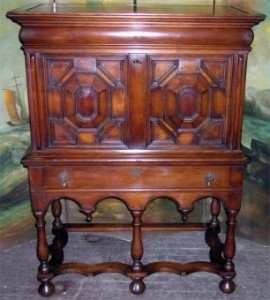
Jacobean furniture dates all the way back to the year 1600. The revival of this style lasted for almost a century. The period represents the growth of foreign influence and the passing of the oak styles. The Jacobean style was made popular during the reign of James the first and was also popular under his son Charles the second.
The earliest Jacobean furniture was influenced mainly by Elizabethan (1603 -1688) styled furniture. During this time the furniture took on different styles. Early Jacobean furniture was somewhat inward looking, not fully embracing exotic influences that were more ornate. Colonial Americans copied the early styles of the furniture as best as they could since they did not have skilled furniture makers.
Commonwealth Style (1649-1660) marks the middle of the Jacobean Period, when the furniture was of simpler design and undecorated. The late Jacobean Period is that of the Carolean period, named for King Charles II. Charles the first was more cultured than his father and took much care and interest in the furnishings of his palaces and mansions and especially in the collection of great art and paintings. During Charles’s reign over England, he paid more attention to domestic comfort with much more use of padded upholstery, carpets instead of rush mats, and finer embroidery. The Latin name for James is Jacobus. The English style in vogue beginning with James I’s reign is referred to as “Jacobean”. The Jacobean, or Jacobethan, era was another phase of English Renaissance architecture, theatre, and decoration and formed a continuation, begun in the Elizabethan age, of the Renaissance’s penetration into England. In America, Jacobean style furniture is synonymous with Pilgrim style because the early English settlements in America took place during the Jacobean era. Very little American furniture of the earlier part of the Jacobean period is still surviving; but later pieces, from about 1670, are more numerous. Most of the American primitive furniture was produced during this period by colonists to make do, because there were few skilled cabinetmakers in the colonies.
There were many different features in the Jacobean furniture style. Oak was the chief wood and Ash and maple were used for turning and whittling. Using pine wood was also a popular method. There were also a few different types of Jacobean furniture. This included turned chairs, highly carved mirror frames, footstools, and gateleg tables. Upholstery was used to improve chairs. Upholstery is the work of providing furniture, especially seats, with padding,springs,webbing and fabric covers. Materials such as silk, tapestries, crewelwork, linen, velvet, and even leather were used on various types of chairs. There were four different chair styles in the Jacobean era that included three-legged, carver, and Brewster. Almost all flat surfaces on chairs, chests, etc. are carved in low relief. Jacobean furniture was very sturdy, massive in size, notoriously uncomfortable, and made to last. The furniture pieces that were produced consisted mainly of chests, cupboards, trestle tables, wainscot chairs, and gate legged circular tables. Some veneering and inlay were used, and many pieces were painted. Spiral turning was also very popular. Tables were rectangular in shape, with small melon ball turning on the legs. As a rule, Jacobean furniture construction was simple. It was assembled with mortise and tenon joints, held together with pegs.
Jacobean period furniture can mainly be found in the auction houses of England. Being built to last, many pieces have not only survived, but are still in good condition. Understandably expensive, most “Jacobean antiques” available for sale are actually 19th century reproductions. Lines of furniture today have the same styles and will reference the Jacobean era.
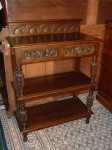
|
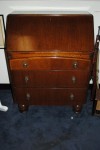
|
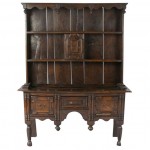
|
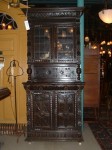
|
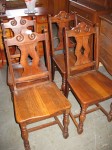
|

|

|
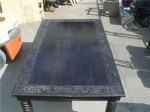
|

|
Tags: Carolean, Charles, Elizabethan, England, Furniture, Jacobean, James, Pilgrim, Renaissance, Upholstery
